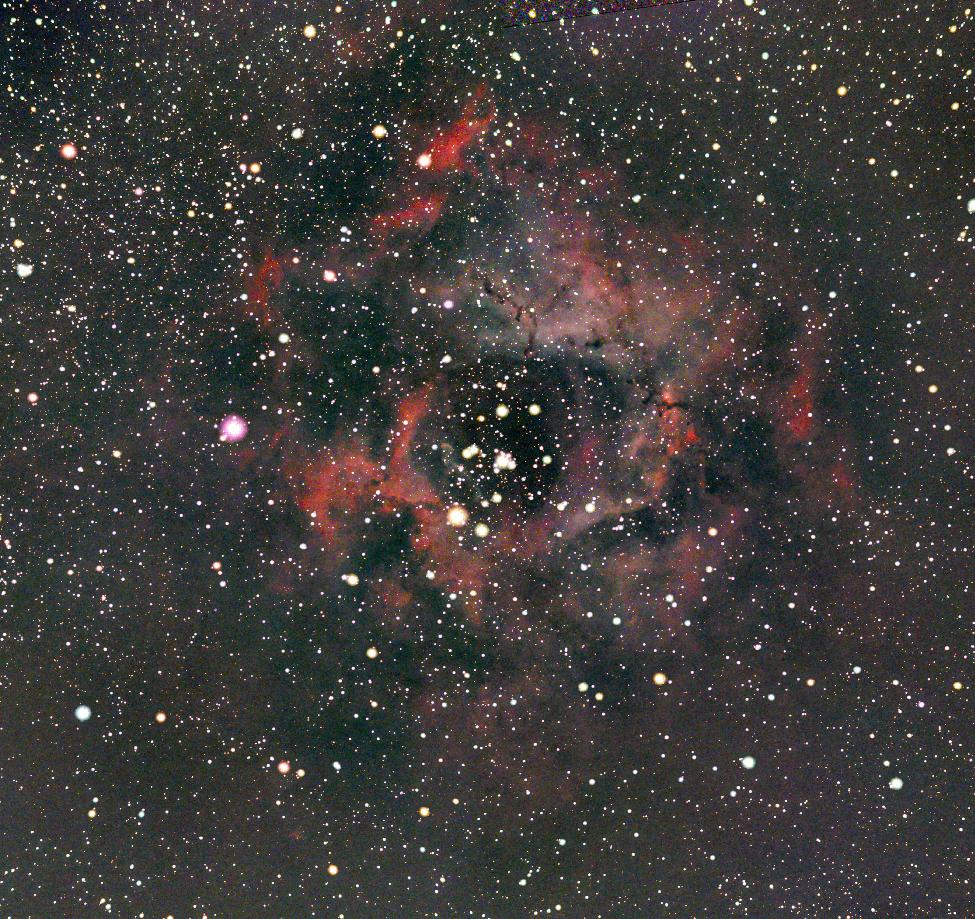
The Rosette Nebula (NGC 2237)
The Rosette Nebula, or NGC 2237, is a large circular emission nebula in constellation Monoceros (The Unicorn). Its large size caused
several catalog numbers. For instance, the whole nebula is NGC 2237 and the bright cluster within it is NGC 2244. Other parts
of the nebula are NGC 2238 and 2239. It is about 5,500 light years away and was discovered by John Flamstead in 1690. The Rosette
Nebula is a cloud of gas and dust extending 1 degree across, about 5 times the Moon. As one might presume, here is ongoing star formation
in the nebula, and in 2004 astronomers announced finding a very young star with a Herbig-Haro jet, a narrow jet of partially ionised gas
ejected by stars colliding with nearby clouds of gas and dust at several hundred kilometres per second.
Some astronomical objects are equally symmetric on all sides and the best way to frame such objects are by squaring the object
with a camera. However, camera apertures are usually landscape with aspect ratios of 3:2, 4:3, or 16:9. A way around this is
by taking two separate images of the nebula and stacking the two images vertically with the long sides adjacent to each other:
and thereby forming a square. This is how the above image was composed.
{ Photo: R Lang & Associates }